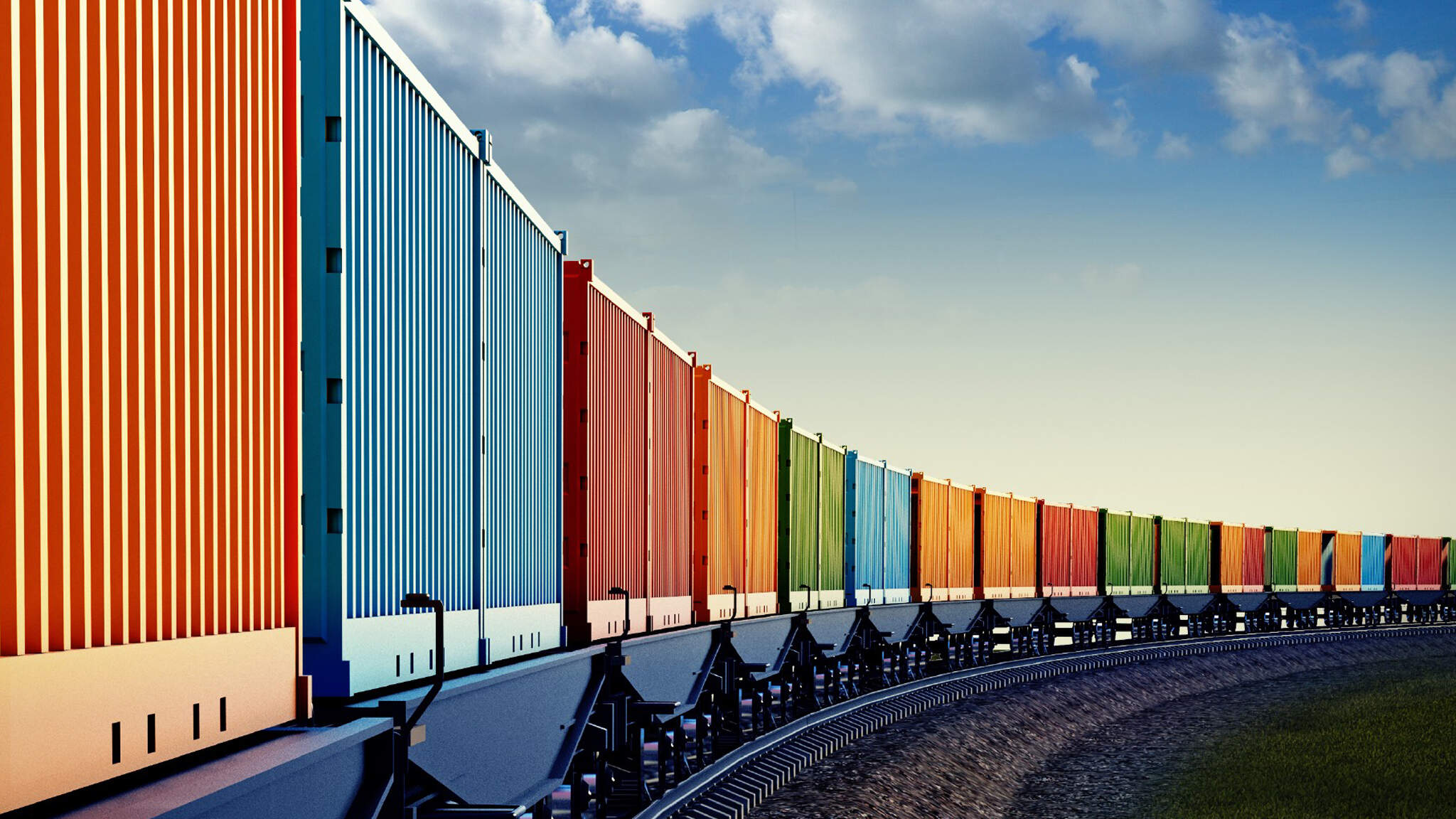Bypass for the Silk Road
The fastest routes of the Silk Road pass through Russia and Belarus. But since the war in Ukraine, these routes can no longer be used. DACHSER now offers two alternatives: By train on the "Middle Corridor" and with full truck loads on an alternative southern route between China and Europe.

DACHSER had discontinued the rail services it offers on two train routes due to the war in Ukraine, as the connections through Russia or Belarus had become impossible. To continue offering a rail connection between China and Europe, DACHSER is expanding the portfolio of DACHSER Rail Services. Starting immediately, the logistics provider is organizing a train connection on the Xi’an–Budapest route twice a week on what is known as the Middle Corridor in order to continue offering its customers capacity on the rail route through Central Asia.
Additional alternative
Along what is known as the Middle Corridor, the trains first pass through Kazakhstan and Azerbaijan, then cross the Caspian and Black Seas by ship to Romania, before finally arriving in Budapest, Hungary. From there, the containers are transported by train to further hinterland terminals such as Vienna, Munich, or Ludwigshafen. From the originating terminal in China to the destination terminal, the trains take between 45 and 55 days.
“With this route, we can replace the rail connections along the New Silk Road through Russia and Belarus and continue to offer our customers a reliable, environmentally friendly multimodal service,” says Vedat Serbet, Rail Services Manager EMEA at DACHSER.
Especially in these challenging times, with companies still struggling with capacity bottlenecks, transport by rail is an additional alternative to sea and air freight.
From Xi’an in China, trains run twice a week to Europe. The containers are monitored around the clock by GPS and reach every hinterland terminal in Europe.
Southern route for DACHSER Cargoplus
In order to be able to connect Chinese production sites directly with customers in Europe by truck at present, the full truck load transports are handled via a southern alternative route. The transport leaves China via the Alashankou border crossing in the direction of Kazakhstan. It then travels by ferry across the Caspian Sea to Azerbaijan, Georgia, through Turkey and from there to the consignees in Europe. Depending on the waiting times at the borders and at the ferry, which can be a bottleneck with this intercontinental transport alternative, the journey takes between 26 and 30 days. In total, the goods are completely reloaded twice onto another truck.
DACHSER Cargoplus launched the service of transporting full truck loads between China and Europe two years ago - at that time via the faster route through Russia. The service is aimed in particular at the fashion, automotive, chemical, and DIY sectors, as well as manufacturers of electrical appliances and components and medical products.
Chinese customs frequently changes its specifications, regulations, and handling and product controls. Nevertheless, to make exporting by truck as smooth as possible, DACHSER Cargoplus has installed a "green light" process. Only after the export documents have been successfully submitted and checked by the customs authorities of China and the Eurasian Economic Union is there a "green light" to pick up the goods at the loading point.
DACHSER Cargoplus also offers comprehensive services for all aspects of the transports, which can be tracked by GPS outside China. Hazardous goods transports are also possible. Embargoed goods, which are not allowed to be transported through the countries of the Eurasian Customs Union due to international guidelines, are excluded.
